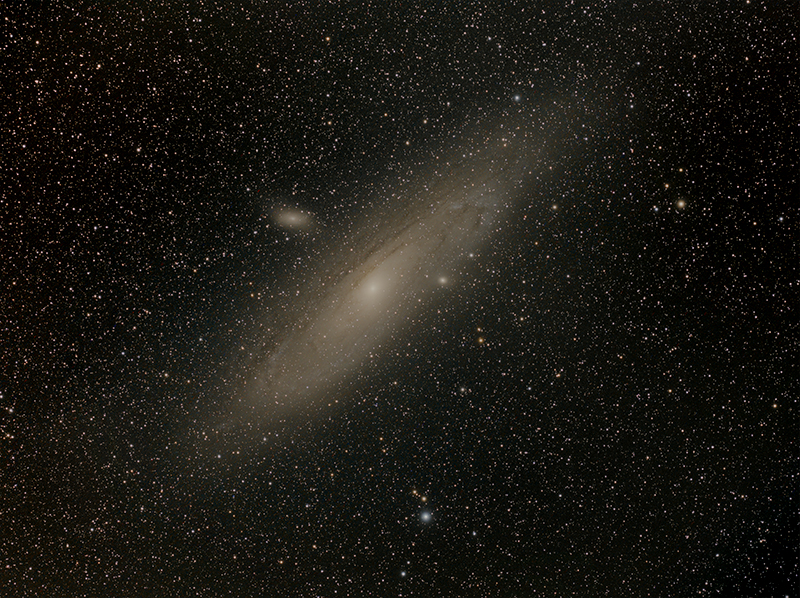Presently
Currently I am primarily using the following equipment in my every night photography of the starry sky. Depending on the target I’m using the Celestron 8″ EdgeHD for small DSO objects and planetary, William Optics ZenithStar 80mm ED II Refractor with Field Flattener IV for medium field objects and guiding, and finally the William Optics RedCat 51 for wide field.
I managed to purchase a used SkyShed POD and a 8.5″ Diameter Pier for my telescope so I didn’t have to take it down every time I use it, I also bought a 365 Telescope Cover for times when I’m away from the dome.
I’m still using my trusty Losmandy GM8 which was modified for Canadian Winters and Astroimaging by replacing the original worm gear with one from O-Vision.
For outreach I tend to utilize a Baader Hyperion 8-24mm Click Zoom which allows me to find targets easily and zoom in for the public to get a good look, everyone seems to love seeing Jupiter and Saturn with this eyepiece when its coupled with the 8″ scope.
Finally imaging camera, I’m still exploring options for a dedicated astro camera, in the mean time I’m using mirrorless cameras and OSC. Right now I’m imaging with the Nikon Z6 and Panasonic GH4 and a Modified Full Spectrum G5. I also managed to pick up a basic Ha Filter from SVBONY.
2018-2019

Recently I’ve invested in a field flattner for my William Optics Zenith Star 80mm ED II scope to get it closer to astrograph quality. I’ve also purchased a wider RedCat 51mm scope, which will give me an ultrawide field and replace the continuing camera lens selection (I’ll still use my fish-eye for full sky images and the Noct-Nikkor 58mm f1.2 for fast photography of transient events). I’ve also invested in early 2019 in an observatory dome which helps save time and effort by not having to continually set-up and take down every night I want to image.

I’m currently using a Losmandy GM8 astronomy mount, it is one of the older models so it has had a few modifications done to it to allow for proper astrophotography in Canadian climates. There is also no GOTO (Gemini system) but it does the job exceedingly well.

Finally all of this gets to work in my SkyShed POD (Personal Observatory Dome) which has really allowed me to expand on my astroimaging craft with additional nights.

All this comes together to allow me to image at night, I’ll keep this page as updated as possible as I introduce new gear (like improved guiding) etc. But that is the bulk of what I use for all my images to date.

2015 – 2018
The big changer here was that I moved to the Losmandy GM8 mount, which gave me a lot more stability especially when coupled with some modifications for astronomy in Canada that were implemented. Coupled with a William Optic Scope I could start to do some semi-decent wide-field imaging. The first scope is an 80mm Zenithstar II ED which was my very first imaging (APO) scope with the WO Field Flattener IV on the back; the field flattner really turned this Doublet into close to astrograph quality scope.



Additionally I also purchased a Celestron 8″ EdgeHD which I use for smaller DSO object and Planetary imaging. At over 2000mm focal length it packs a punch despite being an optically slower scope. One day I may be lucky enough to get hyperstar and convert it to a 400mm f2 photo munching monster or the 0.7x focal reducer for 1400mm… one can dream.


Of course I continued to occasionally mount camera lenses on the mount and take some very wide field shots…

2011-2015

I went to my local Astronomy Shop Focus Scientific and purchased a “real” astronomy set-up, the Sky-watcher HEQ5 had go-to and paired with a 100mm refractor it allowed for significantly better images. I piggy backed my camera on the scope as well.

I got decent results from this scope, however I never “went deep” as I had issues getting decent polar alignment and I was not guiding back then, things now I understand are essential.
2010-2011

So I started getting into Astronomy in 2009, after a few months of looking at the stars through nope-scope and some camera lenses I finally acquired a EQ-1 Mount. Yes, that is a Manfrotto super clamp holding a tripod plate to the GEM mount. I had a lot of failures with this set-up but finally got a decent shot of Andromeda before taking the plunge into a more capable mount.








